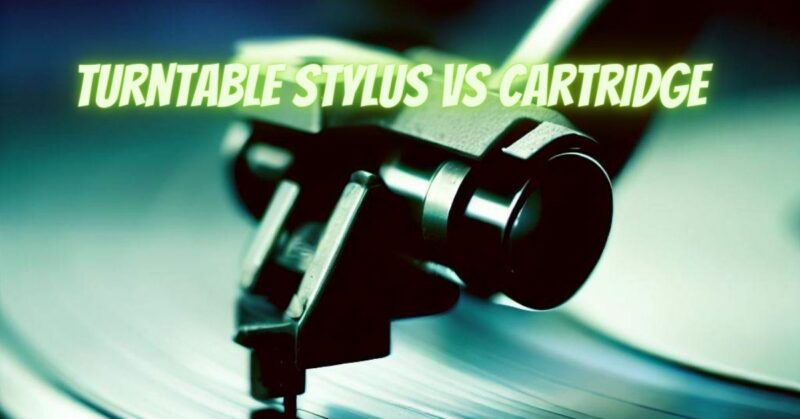When diving into the world of vinyl records and turntables, newcomers often encounter a terminology-rich landscape that can be somewhat confusing. Two essential components that play a vital role in the playback process are the turntable stylus and cartridge. While closely related, they serve distinct purposes and have unique characteristics. This article aims to clarify the differences between the turntable stylus and cartridge, shedding light on their individual functions and contributions to the vinyl listening experience.
The Turntable Stylus: A Microscopic Marvel
At the heart of the turntable stylus is a small, pointed gemstone or synthetic material that delicately traces the grooves of the vinyl record. The stylus, often referred to as the needle, serves as the direct contact point between the record and the playback system. Its microscopic size belies its critical role in converting the physical variations of the grooves into electrical signals that are then amplified and transformed into audible sound.
Functions of the Stylus
- Tracking: The stylus’ primary task is to track the intricate spiral grooves of the vinyl record. As the stylus moves along these grooves, it vibrates in response to the microscopic bumps and valleys etched into the record’s surface.
- Preservation of Grooves: The stylus must tread carefully to minimize wear and tear on the grooves. A well-maintained stylus, properly aligned and of high quality, ensures a balanced and smooth tracking motion that preserves the record’s longevity.
- Accurate Signal Generation: The stylus generates minute electrical signals through its contact with the record. These signals carry the sonic information that eventually becomes the music we hear.
The Cartridge: A Complex System
The cartridge, in contrast, is a more complex assembly that houses the stylus and integrates it with other components. It includes coils, magnets, and suspension mechanisms that play a role in generating and transmitting the electrical signals created by the stylus. Cartridges are available in various types, including moving magnet (MM) and moving coil (MC) cartridges, each with its unique characteristics.
Functions of the Cartridge
- Signal Generation and Conversion: The cartridge’s primary purpose is to convert the mechanical vibrations of the stylus into electrical signals. It does this through the interaction of magnets and coils, which generate a small voltage that corresponds to the movement of the stylus.
- Compatibility: Cartridges vary in output levels, impedance, and other electrical characteristics. Choosing the right cartridge for your turntable setup ensures compatibility and optimal performance.
- Sound Character: Different cartridges can impart specific tonal characteristics to the music. Audiophiles often experiment with cartridges to find one that matches their preferred sound profile.
In the intricate world of vinyl playback, understanding the difference between the turntable stylus and cartridge is essential. While the stylus is the microscopic bridge connecting the grooves to the playback system, the cartridge is a complex system responsible for generating and converting the vibrations into electrical signals. By appreciating the distinct roles each component plays, enthusiasts can make informed decisions about stylus and cartridge selection, alignment, maintenance, and upgrades. The synergy between the stylus and cartridge contributes to the unique and captivating analog sound that continues to captivate music lovers around the world.


